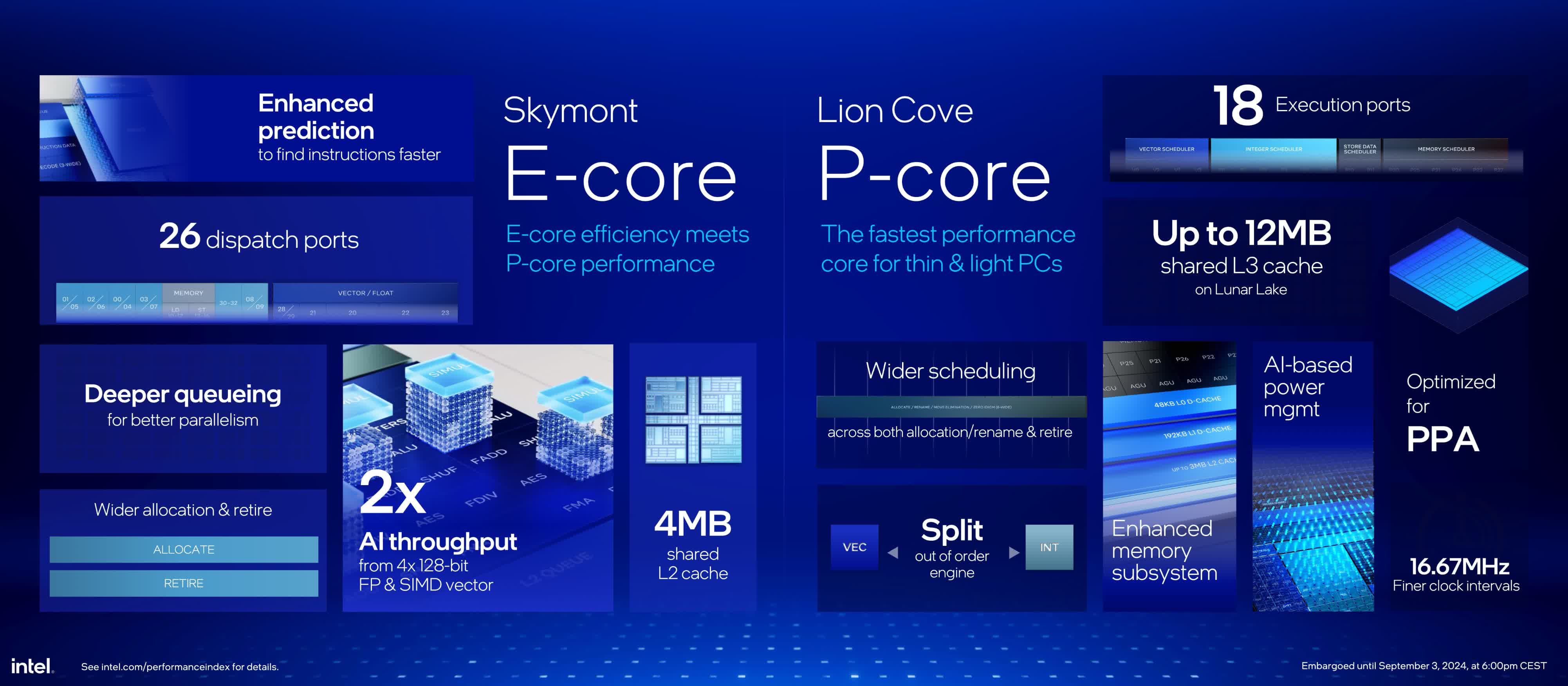In context: Competition is a catalyst for innovation, particularly in the tech sphere, where the looming risk of losing the performance crown pushes companies toward bold, high-risk enhancements. Intel’s latest Core Ultra Series 2 chips, also known as “Lunar Lake,” exemplify this phenomenon.
Triggered by the competitive pressure from Arm-based chips like Apple’s M-series SoCs and Qualcomm’s Snapdragon X-series, Intel has overhauled its chip architecture for the Ultra Series 2. (For more on this, see my column “Intel Strikes Back”.)
Notable changes include incorporating system memory into the chip, eliminating hyperthreading support, and reducing the number of CPU cores. Initially, these adjustments appeared perplexing or even eccentric compared to Intel’s historical architectural changes.
Intel has officially introduced the Core Ultra 200V SoCs preceding IFA Berlin. Intel’s benchmarks suggest that these new chips have not only reached parity with both Mac and Snapdragon-based notebooks in CPU and NPU benchmarks but have surpassed them in many scenarios.
These new chips also reportedly outperform rivals in battery-life and performance-per-watt tests, a significant claim considering the acclaim Arm-based offerings have received for their battery efficiency. This development challenges the notion that x86-based PCs can’t compete with Arm systems in power consumption, illustrating that the instruction set architecture (ISA) isn’t the definitive factor for system power efficiency.
Independent verification is essential to substantiate Intel’s claims, but the company provided what seemed to be a comprehensive and convincing account of its benchmarking process. Intel is positioning its product as competitively robust on several fronts, emphasizing app compatibility inherent in x86 CPUs, which strengthens its appeal.
In a broader context, the competitive edge of Core Ultra Series 2 injects renewed vigor into the PC market. With the release of AMD’s Ryzen AI 300 series chips and Qualcomm’s Snapdragon X series parts, we might witness a resurgence in the PC sector, even in the absence of widespread AI-enabled software availability.
Notably, the Core Ultra Series 2 is the first Intel chip to meet Microsoft’s Copilot+ PC specifications, yet the initial devices featuring the chip will be labeled as “Copilot+ Ready.” This is because Microsoft’s software needed for the Copilot+ experience, including the highly anticipated Recall feature, won’t be ready until November.
Despite this, Intel highlighted the variety of third-party applications with AI features that can be accelerated across NPUs, the CPU, and the upgraded Xe2-based GPU in Core Ultra Series 2.
Although the spotlight on AI-enhanced PCs often falls on NPUs and Microsoft’s Copilot+ applications, Intel argued for a more balanced utilization of the CPU, GPU, and NPU for running AI. This approach appears more sustainable in the long run.
Discussions with ISVs at the event (who were guests of Intel) confirmed that their development methodologies are aligning with leveraging multiple SoC components rather than just the NPU. They also noted the difficulties in creating software compatible with varying NPU architectures from Intel, AMD, and Qualcomm, highlighting the ongoing challenges in the early stages of the AI PC revolution.
Looking forward, one of Intel’s principal challenges will be integrating the groundbreaking ideas from Lunar Lake (“Core Ultra Series 2”) into future SoC designs.
Considering chip architecture design spans multiple years, incorporating such drastic changes could be particularly demanding, especially given the deviations from standard Intel designs and the difficulty of making substantial alterations late in the design process.
However, if Intel succeeds and continues to build on the extensive work for AI-centric applications and foundational efforts with ISV partners, it could further the momentum generated by Core Ultra Series 2. While Intel faces more significant, existential challenges, rejuvenating its client business would mark substantial progress.
Bob O’Donnell is the president and chief analyst of TECHnalysis Research, LLC, a market research firm offering strategic consulting and market research services to the tech industry and financial community. Follow Bob on Twitter @bobodtech




